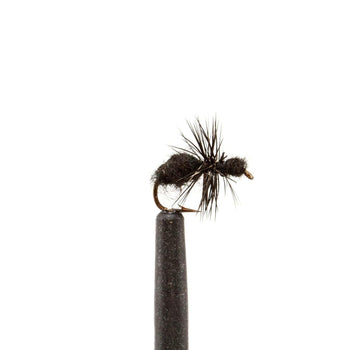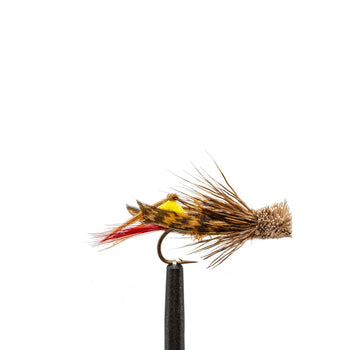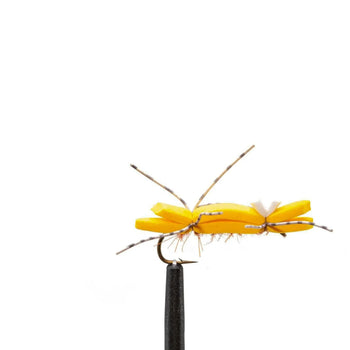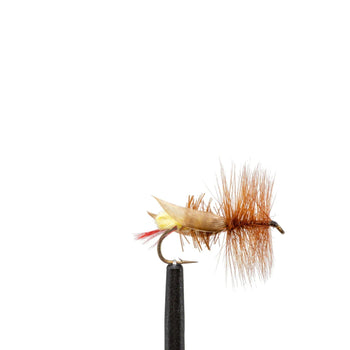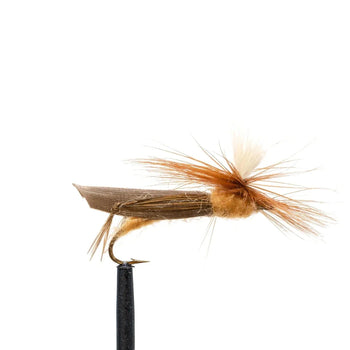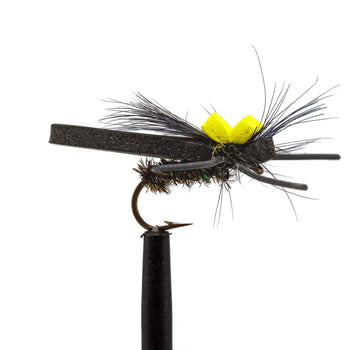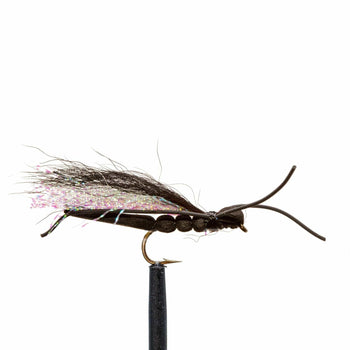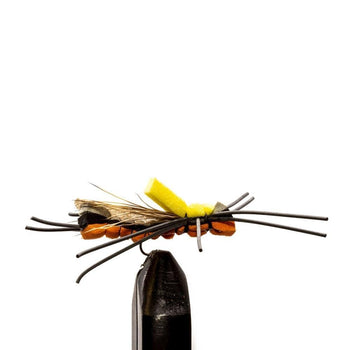Rule the Waters This Summer with Terrestrial Flies

Summer fly fishing can be an exhilarating experience, especially when you incorporate terrestrial fly patterns into your strategy. These flies replicate land-based insects that frequently end up in the water, making them irresistible to hungry fish. Utilizing terrestrials not only adds a new challenge to your fishing but also heightens the excitement of convincing fish to bite. Let’s delve into the different terrestrial patterns and discuss their effective usage during summer fly fishing adventures.
Understanding Terrestrial Fly Patterns
Terrestrial flies are designed to mimic land-dwelling insects. Unlike aquatic insects that spend most of their life in water, terrestrials live primarily on land. These insects often find their way into water bodies due to wind, rain, or simply falling from vegetation, providing a tasty meal for fish. Fishing with terrestrials can be done blindly, casting and drifting them over likely spots without needing to spot rising fish first.
Why Use Terrestrial Insects?
While there are days when trout rise in large numbers to thick hatches, such moments are rare. More often, anglers face selective trout that ignore meticulously presented flies. This is where terrestrial insects come into play. These patterns are effective throughout spring, summer, and fall, especially in the afternoon when aquatic insect hatches are less frequent. Terrestrials can be your secret weapon during tough fishing conditions when other patterns fail to attract fish.
What are Terrestrial Insects?
Unlike mayflies, caddisflies, and stoneflies that spend their entire lifecycle around water, terrestrial insects are land-dwelling bugs that accidentally end up in the water. This includes cicadas, crickets, caterpillars, bees, and many others. Any land insect can become prey for fish once it falls into the water.
Anglers need not worry about replicating every terrestrial insect; focusing on a few key patterns can be very effective. The most essential terrestrial insects to know are grasshoppers, beetles, and ants. These insects are abundant throughout the fishing season and are a regular part of a trout’s diet.

Types of Terrestrial Fly Patterns
- Hoppers
- Ants
- Beetles
- Crickets
- Cicadas
Hoppers
Grasshoppers, or “hoppers,” are a staple in terrestrial fly fishing. Emerging in large numbers from late June to October, these insects often end up in the water and provide a substantial meal for trout. Bigger trout that usually feed on streamers are often tempted by hoppers on the surface.
How to Fish:
- Location: Cast along riverbanks, especially near deep, slow-moving holes and undercut banks. In smaller streams, aim for slow-moving pools or fast-moving riffles.
- Presentation: Hoppers rarely stay still when they hit the water, so give them a twitch or two to mimic their natural behavior.
- Retrieve: Use a combination of dead drifting and short, erratic strips to mimic the natural movements of a struggling grasshopper.
- Patterns: Carry a variety of hopper patterns. Use larger, colorful patterns for murky waters and smaller, natural-looking patterns for clear water.
- Pro Tip: Don’t be afraid to make a splash when your hopper hits the water; it can attract fish from a distance.
Ants
Ant patterns are effective throughout the summer, especially on hot, sunny days when ants are most active. They are particularly useful in calm waters where fish are less likely to chase after fast-moving prey.
How to Fish:
- Location: Target shallow, slow-moving waters with plenty of cover along the banks.
- Presentation: Cast your ant pattern close to the bank or under overhanging trees where ants are likely to fall into the water.
- Retrieve: Let the fly sit motionless for a few moments before giving it a slight twitch. The subtle movement often triggers a strike.
- Patterns: Start with simple foam ant patterns in black or brown and experiment with smaller, detailed patterns.
- Pro Tip: Use smaller tippet sizes to avoid spooking wary fish.
Beetles
Beetles are often overlooked by anglers, despite being a common prey for trout. With over 30,000 species in North America, beetles are a reliable and abundant food source for fish. Beetle patterns shine during the peak of summer, especially after rain showers when beetles are knocked into the water. They work well in both still waters and streams.
How to Fish:
- Location: Beetles work well in fast-moving water where fish have less time to inspect them. However, they can also be effective in slow-flowing waters.
- Presentation: Cast near the edges of weed beds, along banks, or under tree branches.
- Retrieve: Allow the beetle to drift naturally with the current. Occasionally, give it a gentle twitch to mimic a struggling insect.
- Patterns: Black is a versatile color, but don’t hesitate to try beetles with a bit of flash or brighter hues.
- Pro Tip: A beetle pattern with a bright indicator can help you keep track of your fly in low light conditions.
Crickets
Crickets are a fantastic terrestrial pattern that should not be overlooked by anglers. These insects are prevalent throughout the summer, especially in the early mornings and late evenings when they are most active. Crickets provide a substantial and irresistible meal for trout, making them a reliable choice for fly fishing.
How to Fish:
- Location: Focus on shaded areas, especially under trees and bushes where crickets are likely to fall into the water. These spots provide cover for fish and are natural habitats for crickets.
- Presentation: Cast near the edges of weed beds, along banks, or under tree branches. Crickets often end up in these locations naturally.
- Retrieve: Let the cricket drift naturally with the current, occasionally twitching the fly to imitate a live insect. This subtle movement can entice a strike.
- Patterns: Start with simple black or brown cricket patterns. Experiment with different sizes to match the natural crickets in the area.
- Pro Tip: Fish crickets in tandem with another terrestrial pattern for increased chances of success. This can mimic multiple insects falling into the water, increasing the likelihood of attracting fish.
Cicadas
Cicadas are one of the most effective terrestrial patterns, especially during years of cicada emergence. These large, noisy insects draw attention from fish far and wide, providing an exciting and productive fishing experience.
How to Fish:
- Location: Cast towards the bank, especially near trees where cicadas are known to fall. These areas are prime spots where fish expect to find cicadas.
- Presentation: Cast near the edges of weed beds, along banks, or under tree branches. Cicadas often end up in these locations naturally.
- Retrieve: Allow the cicada to drift naturally with the current. Occasionally twitch the fly to mimic a struggling insect. This action can trigger aggressive strikes.
- Patterns: Use larger, foam-bodied cicada patterns that are highly visible and create a disturbance on the water's surface. Natural colors like black, brown, and green are effective.
- Pro Tip: Use a sturdy tippet when fishing cicada patterns. The explosive strikes from fish attacking cicadas can be violent, requiring a stronger line to avoid losing the fish.

General Tips for Fishing Terrestrial Patterns
- Match the Hatch: Observe the insects around you and match your fly’s size, color, and type to increase your success.
- Be Stealthy: Approach your fishing spots quietly, as fish in clear, shallow water can be easily spooked.
- Use Floating Lines: Terrestrial patterns are typically fished on the surface, so floating lines and leaders are essential.
When to Use Terrestrial Flies
Timing and environmental conditions play crucial roles in using terrestrial flies effectively. Summer’s warmer temperatures bring more insect activity. Windy days are particularly advantageous as they blow insects into the water. Always consider the surrounding vegetation and water conditions to determine the best times to use terrestrials.
Techniques for Effective Terrestrial Fly Fishing
Presentation Techniques: Achieve a natural drift by casting upstream and letting your fly float downstream. Accurate casting and targeting areas where fish are likely to be waiting for food are key.
Retrieval Methods: For smaller terrestrials like ants and beetles, use subtle twitches. Larger patterns like grasshoppers and crickets may benefit from an active retrieval with splashes and noise.
Best Locations for Terrestrial Fly Fishing
Look for areas with abundant vegetation near the water, as these are likely spots for terrestrials to fall in.
Identifying Productive Areas: Watch for signs of fish feeding on the surface. Rising fish, water disturbances, and hovering insects can indicate good fishing spots.
Top 10 Terrestrial Patterns for Summer Fly Fishing
- Black Ant: A classic and effective pattern that imitates the common black ant, perfect for slow-moving waters.
- Dave's Hopper: Mimics the natural grasshopper, great for open, windy days.
- Circus Peanut: A versatile, articulated streamer pattern that can imitate a variety of prey, including terrestrials.
- Joe's Hopper: Another reliable grasshopper imitation, ideal for grassy banks and windy conditions.
- Chernobyl Ant: A larger, foam-bodied fly that’s highly visible and great for rough waters.
- Parachute Hopper: Combines a realistic look with excellent buoyancy, perfect for varied conditions.
- Cicada: Highly effective during cicada emergence, drawing attention from fish with its size and noise.
- Snake River Beetle: A durable and buoyant beetle pattern, excellent for both still and moving waters.
- Foam Flying Ant: Stays on the surface well, making it perfect for windy days when ants are blown into the water.
- Jurassic: A robust and enticing pattern designed to imitate larger terrestrial insects, ideal for catching bigger fish.
Final Thoughts
Using terrestrial fly patterns in summer fly fishing can be a rewarding challenge. By understanding the types of flies, when to use them, and how to present them effectively, you can enhance your fishing experience. Observe your environment, experiment with different patterns, and enjoy the thrill of outsmarting fish with natural imitations.
For those looking to expand their terrestrial fly collection, be sure to check out Jackson Hole Fly Company's extensive Chubby Chernobyl collection. These versatile flies are perfect for a variety of fishing conditions and are a must-have for any serious angler.
Happy fishing!
SHOP ALL TERRESTRIALS
RELATED ARTICLES:
- Casting Into Summer: An Early Season Fly Selection Guide
- Conquering the 2024 Cicada Invasion: Fly Fishing Strategies & Patterns
- Casting Into the Blue: A Guide to Saltwater Fly Selection
- How to Choose the Right Size Fly Fishing Leader & Tippet
- Maximizing Your Fly Fishing Success: Why You Should Buy Flies in Bulk
- Essential Fly Fishing Knots: 10 Key Ties for Angling Success


